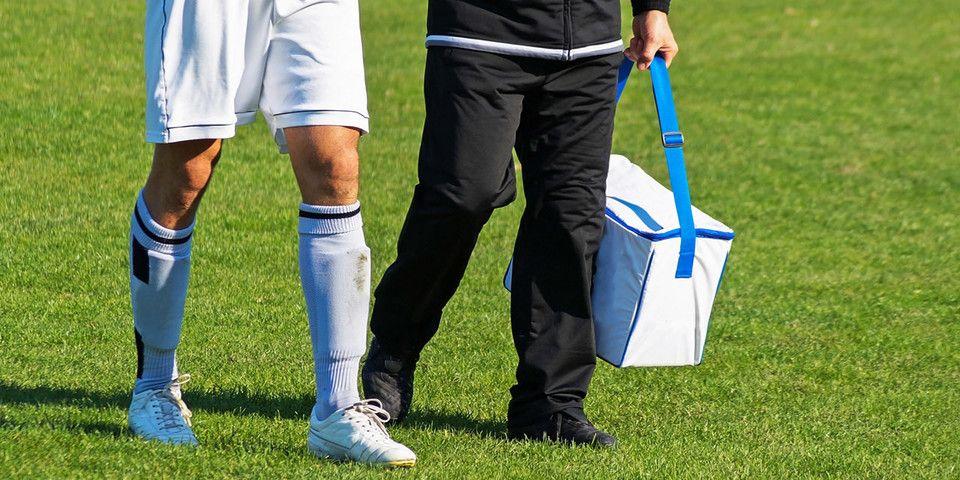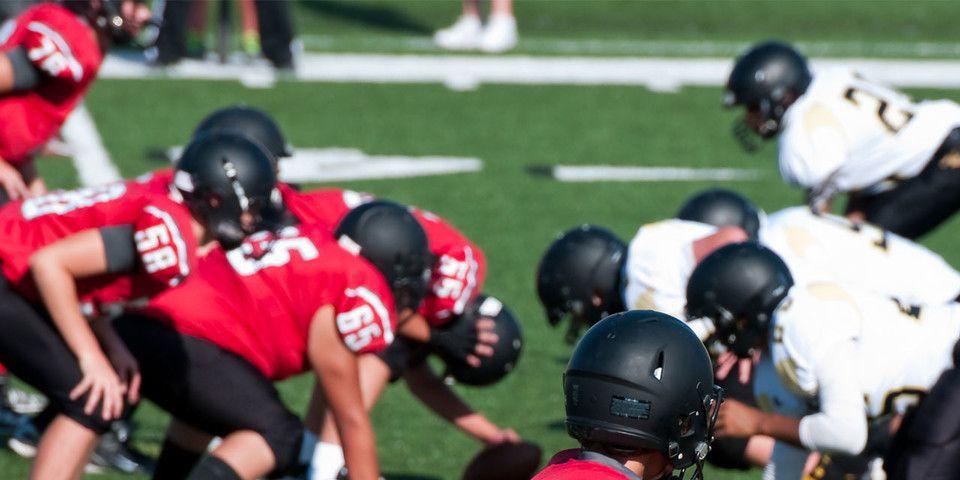Understanding heat injuries is key to preventing heat injuries in Football.
Heat illness during football or other athletic practices or competitions is a leading cause of death and disability among U.S. high school athletes, yet heat-related illnesses are preventable. Prevention begins with understanding the cause. If you or someone you love is at risk of developing football- or other sports-related heat injuries, Rothman Orthopaedic Institute provides the following comprehensive guide to the condition and its most effective treatment.
Types of Heat Injuries
Recognizing heat injuries symptoms, and providing effective treatment immediately, will reduce the number of severe cases. The following list of the different types of heat injuries an athlete may experience can help you know the difference and the best way to proceed with heat injury treatment:
1. Heat Cramps:
Heat cramps are painful, involuntary muscle contractions in the stomach, arms, and legs caused by depletion of fluids and salt during prolonged activity in the heat. Effective treatment includes:
-
Cease activity; rest.
-
Rehydrate with cool water or a low-sugar electrolyte solution.
-
Gently stretch the affected muscles.
2. Heat Syncope:
Heat syncope is weakness, fatigue, and fainting as the result of prolonged activity in the heat, and often occurs during the first five days of adjusting to a new sport or athletic routine. People taking diuretic medicines or with pre-existing heat illness are particularly susceptible. Left untreated, heat syncope can escalate to heat stroke.
Effective treatment includes:
-
Moving to a cool, shaded area.
-
Administering cool water or a low-sugar electrolyte solution, if the athlete is conscious.
-
Applying active cooling measures, such as a fan or ice towels, if the core temperature is elevated.
-
Removing tight clothing.
3. Heat Exhaustion:
Heat exhaustion can be brought on by dehydration or salt depletion, and symptoms vary according to the source.
Dehydration: Perspiration decreases, and skin and body temperatures rise. Core body temperature may reach 104 degrees F. Additional symptoms include excessive thirst, weakness, headache, and sometimes unconsciousness.
Salt depletion: Nausea and vomiting occur with the above symptoms, often with muscle cramps and dizziness. This is more likely to occur during prolonged exercise if water alone is used to replenish fluids. Electrolyte fluid drinks are an effective way to prevent this type of heat exhaustion.
Other effective treatments include:
-
Move the person to a cool, shaded area.
-
Apply active cooling measures.
-
Remove tight clothing.
-
Refer to a physician for further medical attention, especially if nausea and vomiting are present.
4. Heat Stroke:
Heat stroke is the most severe form of heat injuries, and is medically defined as a core body temperature above 104 degrees F. During heat stroke, the athlete’s body cannot regulate its own temperature, which can result in organ system failure.
Symptoms include nausea, seizures, and confusion or disorientation, as well as potentially unconsciousness and coma. Heat stroke may occur as a progression from heat syncope and heat exhaustion, or with no preceding signs of heat injury. This is an acute medical emergency and should be treated immediately by:
-
Calling 911 immediately for emergency services
-
Decreasing core body temperature through immersion in an ice bath
-
Remove as much clothing as possible
-
Apply ice packs to the armpits, groin, and neck areas
-
Continue cooling efforts until the emergency crew arrives
General Prevention
If you or someone you love is at risk for sports-related heat injuries, consider taking the following precautions before, during, and after every practice and event:
-
Consult your physician before starting a new activity. Discuss recent illnesses or medications that could lead to dehydration.
-
Increase the intensity and duration of your exercise program gradually over a period of 7 to 10 days.
-
Ensure you are well hydrated before, during, and after exercise. Break for an 8 oz. cup of water every 20 minutes, even if you do not actively feel thirsty.
-
Monitor the color of your urine. The darker your urine, the less hydrated you are and the greater your risk for heat injury, so drink enough fluids to keep your urine a very light color.
-
Schedule outdoor exercise during the coolest time of day (typically early morning or after sunset). Strongly consider postponing or canceling intense activity during conditions of extreme heat and humidity.
What’s Next?
The first step for anyone with signs and symptoms of heat injuries or other football-related conditions should be to consult a medical professional right away. When you need more specialized treatment, the experts at Rothman Orthopaedic Institute can help you decide which options are right for you.
Call Rothman Orthopaedic Institute today to schedule an appointment at 800-321-9999.
Related Specialties
Related Physicians
Related Services
Related Programs
-

Athletic Training- Sport Medicine Outreach
Our Field Athletic Trainers provide direct sports medicine care to youth, high school, college and professional athletes. Rothman AT’s provide athletic training services throughout Southeastern PA and NJ to interscholastic high schools, colleges, as well as tournaments and special events.Read More -

Injury Prevention Program
The Injury Prevention Program at the Rothman Orthopaedic Institute is dedicated to the prevention of injuries from athletic participation, particularly youth sports.Read More





